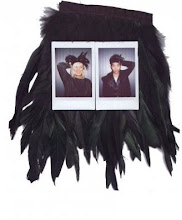Fashion clothing, footwear and accessories have always been used by people to convey an identity. The added dimension of symbolism, which is communicated through the ownership of specific brands and products, enhances identity. It enables an individual greater self expression and group association.’
Jackson.T and Shaw.D 2007: 61
Democratisation of luxury has occurred according to Menkes (2002).T and Shaw.D (2007)stated that the luxury market now comprises of a more diverse population of consumers, as luxury products are pitched at all levels. At the top end and the very wealthy who are refereed to as ‘high net worth individuals.’ (HNWI’s) - those with more than $1million financial assets at their disposal.... Ultra High net worth individuals (U-HNWI’s) -liquid financial assets of US$30 million or more.
Individuals are ‘cash rich time poor’ in terms of lifestyles which have encouraged luxury brands to diversify... focusing in on service experiences.’Western trend and interest on well being which has afforded many brand expansion opportunities.
Robert Polet CEO and chairman of the Gucci Group, believes that consumers of luxury products are becoming more knowledgeable and often know more about fashion than brands know about their consumers. He also perceives consumers are being educated by fast fashion retailers who offer new products every six weeks, creating a shopping rhythm (Polet 2005)
Consumers at different Global points
Consumers vary. Locating Stella McCartney Menswear around the world need to fit in with lifestyle trends and behaviors.
‘Such growth in wealth and consumerism expands the boundaries of luxury and of luxury goods as mass market consumers are able to afford them.’
Jackson.t and Shaw.D 2007: 58
Barry (2008) stated It helps not to be to general. Focusing on a typical person in the audience best advertising in any medium comes from understanding people. But due to Alleres (2003) marketing model showing different segments of luxury- lead to looking at three different typical consumers who can be identified as buying into the different categories of luxury.
1.Accessible Luxury
2.Middle Luxury
3.Inaccessible Luxury
Each at different stages of life Mercer (1996)
1.Bachelor Stage- young, single
2.Full nest 1 or 2 - youngest child under 6, youngest child six or over
3.Newly Married Couples- young no children
Group 3 have joint incomes and tend to spend them, known as so called yuppies beloved of the supply of luxurey goods.
Omar 1999: 63
These groups are most relevant to the product offering. Demography of these age groups are not static. They have all reached the top of Maslow’s hierarchy of needs of self actualization. Consumers have a similar social rank.
A younger and wider audience for luxury goods, such as the ‘nouveaux riches’ of the dot.com and IT worlds is evident indeed 46% of customers of luxury goods are less than 35 years old.
Dubois and Laurent 2002
Hines and Bruce (2008) seen new purchasing patterns can be observed its now seen acceptable to mix and match designer and high street. Cheaper items made to meet the demand from new consumers to be more accessible to entice new consumers. Jackson.T and Shaw.D (2007) claims as society has become more complex and has focused increasingly on the individual, so businesses need to consider a variety of trend information concerned with lifestyle and fashion.’
Umberto Angeloni, luxury expert and former CEO of the Brioni Group, states that the luxury industry patronises and fails to understand the new rich, whom he describes as the Modern Rich. The Modern Rich consumers are knowledgeable, pragmatic, demanding and are now the consumers of preference for the industry.(Supreme Luxury 2007: IHT conference report, WGSN, December 2007)
In a recent survey The Luxury Institute found that 57 % of high-income adults would give greater consideration to purchasing a specific brand that they perceive to be socially responsible. 10 % even say that they would pay a "significant price premium" for such brands.
(Rapaport, October 2007)
The Economist (2005) found trend among the super rich is that of conspicuous non consumption through philanthropy, dressing down and driving beaten up cars, ironically to express an exalted status.
Summerise
Younger consumers dominate the demand for luxury goods and newer products and services are entering the arena. According to Hines and Bruce (2008) Fashion consumers expect innovation and constant change, luxury fashion shorter product cycles have been introduced and investment in innovation has been made to meet the demands of the fast changing fashion market. This has resulted in brand dilution and low entry. But also has led to the development of a spectrum of market segments in the luxury market.
Monday, 11 May 2009
Subscribe to:
Post Comments (Atom)


No comments:
Post a Comment